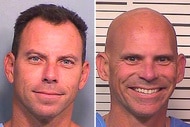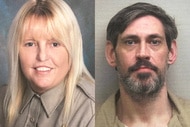Create a free profile to get unlimited access to exclusive videos, breaking news, sweepstakes, and more!
Canadian Teen Murder Suspects Made Videos Confessing To Killings And Saying They Planned More Deaths
The short videos—which were found on the digital camera of one of Bryer Schmegelsky and Kam McLeod's victims—provided no motive for the slayings that sparked a massive manhunt across Canada and ended with the discovery of the teens’ bodies.

Two Canadian teens suspected of killing three people claimed responsibility for the slayings and spoke of their desire to kill more people in a series of videos obtained by police after their deaths.
Kam McLeod and Bryer Schmegelsky were found dead in dense brush near Gillam, Manitoba on Aug. 7 after carrying out what investigators believe was a “suicide pact” ending a nearly month-long search for the two teens, according to the Vancouver Sun.
Near the bodies, investigators found a digital camera with videos recorded by the teens in which they coldly claimed responsibility for the deaths of American Chynna Deese, 24, her boyfriend Lucas Fowler, 23, and 64-year-old botanist Leonard Dyck and expressed their desire to kill more.
"They were cold, they were remorseless, matter-of-fact," Assistant Commissioner Kevin Hackett said of the videos at a press conference Friday, according to CTV News.
The digital camera—which had belonged to Dyck—included six short videos and three still images of the teens that provided few clues as to why the teens embarked on the killing spree.
In the first 58-second video, Schmegelsky said they were responsible for the three murders. The two teens also said they planned to march to the Hudson Bay where they would attempt to highjack a boat and flee to Europe or Africa, the Royal Canadian Mounted Police reports.
But in the next video, which is 51 seconds long, Schmegelsky said the teens had reached the river but that it was very big and fast-moving and they may have to alter their plans. He said the teens may have to commit suicide and McLeod agreed.
“They again take credit for killing three people and express no remorse,” police said.
In a third video, the teens said they had shaved “in preparation” for their deaths but planned to go out and kill more people first. Schmegelsky said the teens expect to be dead in a week.
Then in a shorter video of just 19 seconds, the teens described how they planned to kill themselves and a fifth video appears to have been taken accidentally.
Finally, in the last video, McLeod and Schmegelsky leave what they described as their “last will and testament” and expressed a desire to be cremated.
They never discussed their motive for the shootings, police said.
“If in fact there is a motive, it’s gone with the accused,” Hackett said during the press conference.
The teens’ killing spree began in mid-July shortly after embarking on a road trip, ostensibly to find work.
Authorities now say the same day the teens left their Port Alberni, British Columbia home they legally purchased a SKS semi-automatic rifle and 20 rounds of ammunition.
Police discovered the bodies of Fowler and Dease the morning of July 15 near a blue van that was registered to Fowler. Investigators believe that McLeod and Schmegelsky came across the van and targeted the pair for “unknown reasons.”
The couple had been shot multiple times and authorities believe at least some of the shots were fired at the couple from behind.
After the killings, police believe the teens headed up to the Yukon; however, after they had trouble with their truck, police think the teens came back to British Columbia, where they encountered Dyck a few days later.
They killed the University of British Columbia botany lecturer for “unknown reasons,” burned their own vehicle to cover up evidence and then stole Dyck’s Toyota RAV4 to make their escape, police said.
Dyck was found with injuries on his body, including bruises, burns and a single gunshot wound.
Police were able to positively identify Dyck after his wife Helen called police to report that she believed a composite sketch released by authorities looked like her husband.
Police initially believed McLeod and Schmegelsky were missing persons after finding their burned-out vehicle abandoned, but later linked them to the killings, sparking a massive manhunt.
“The murders appear to be random and crimes of opportunity,” Hackett said, according to CTV News.
Over the next few weeks, authorities used drones, dogs, and the Canadian Armed Forces to scour an area in Manitoba where witnesses believed they had spotted the teens.
Eventually the teens’ bodies were discovered near the Nelson River, not far from where police discovered Dyck’s burned out RAV4.
Police believe McLeod shot Schmegelsky before turning the gun on himself as part of a suicide pact.
Authorities have opted not to release the videos made by the teens after the behavioral analysis unit (BAU) of the RCMP determined the videos could inspire other violence.
“BAU believed that McLeod and Schmegelsky may have made the video recordings for notoriety and releasing them will be seen as an injustice to the victims and their families,” police said in their report.






















